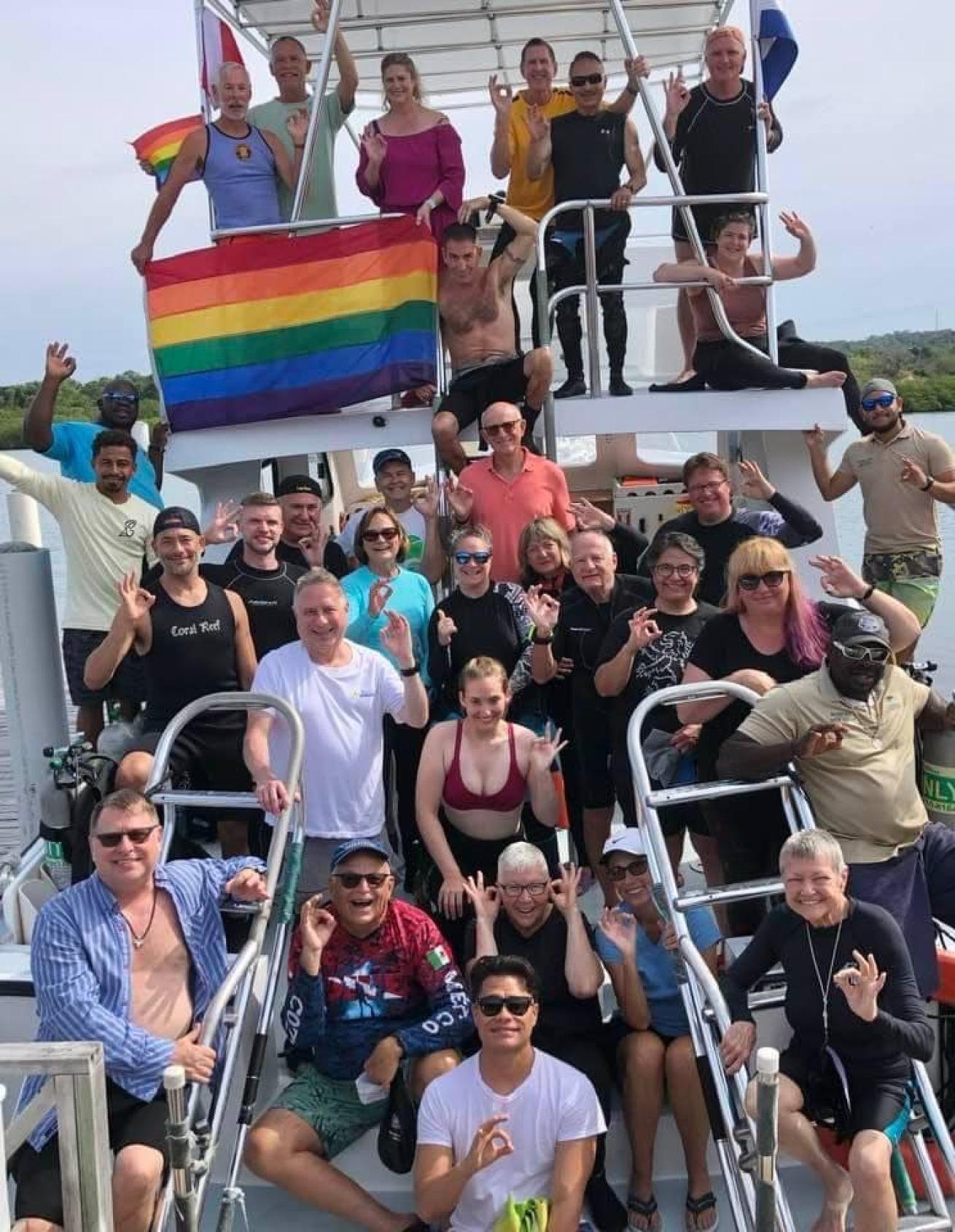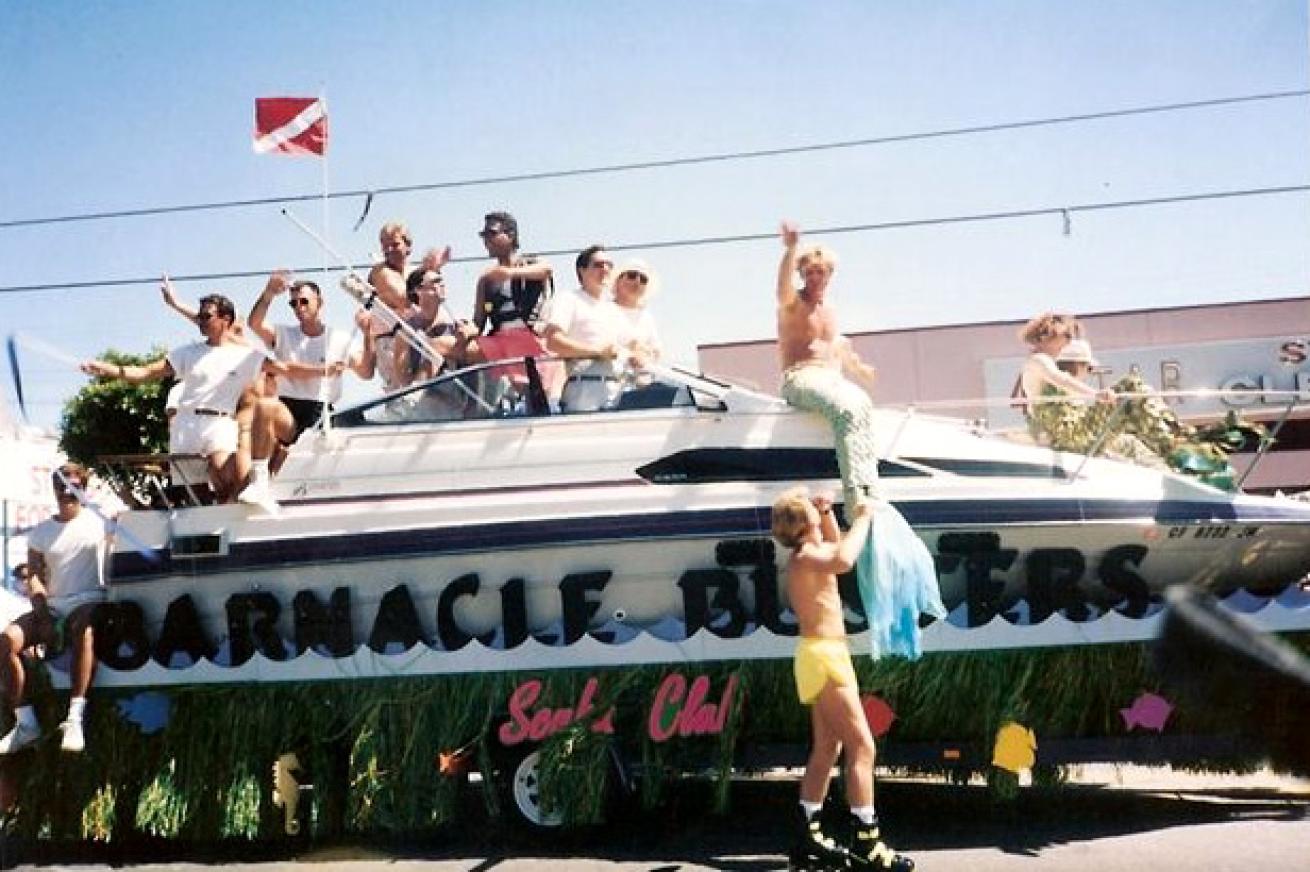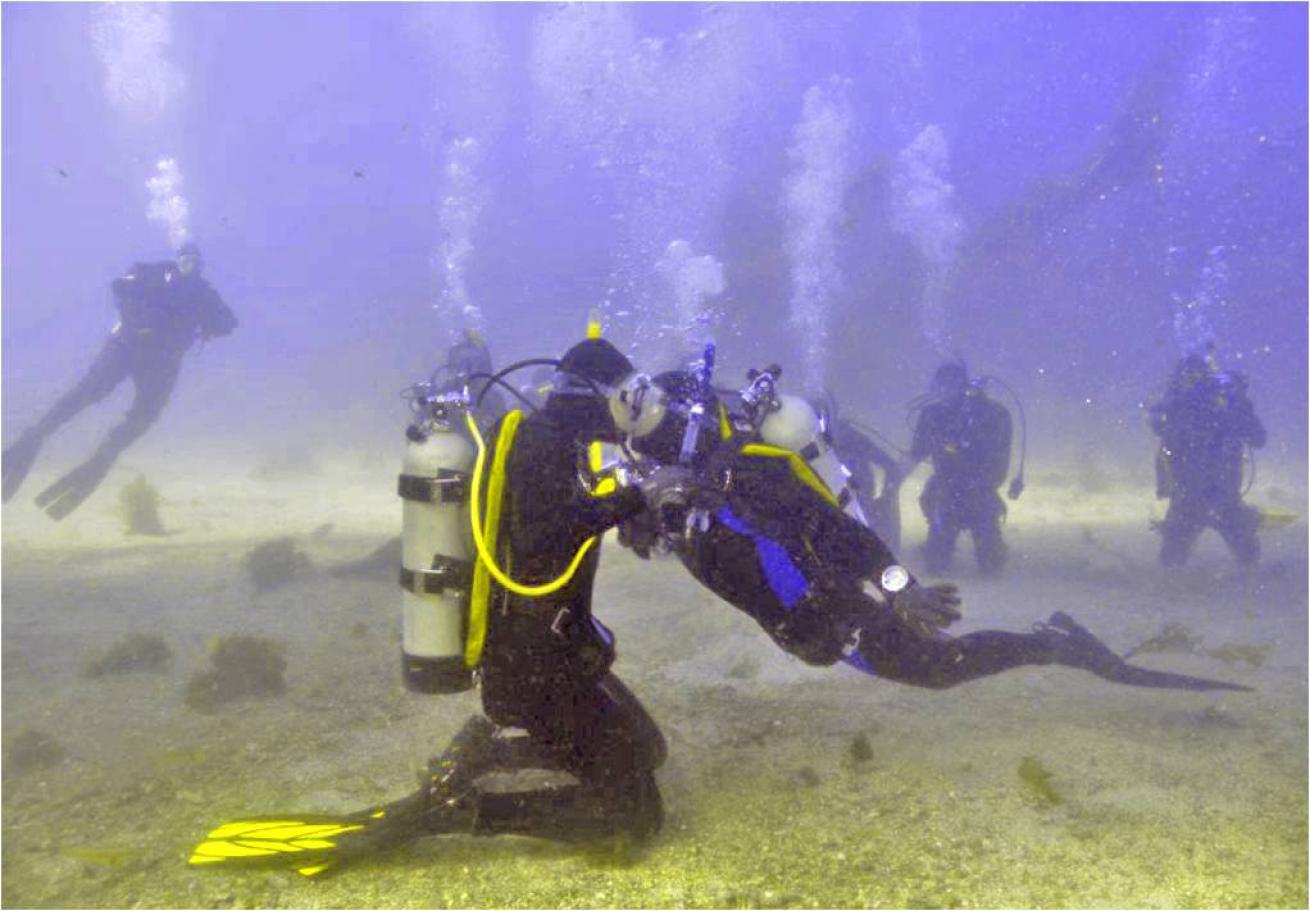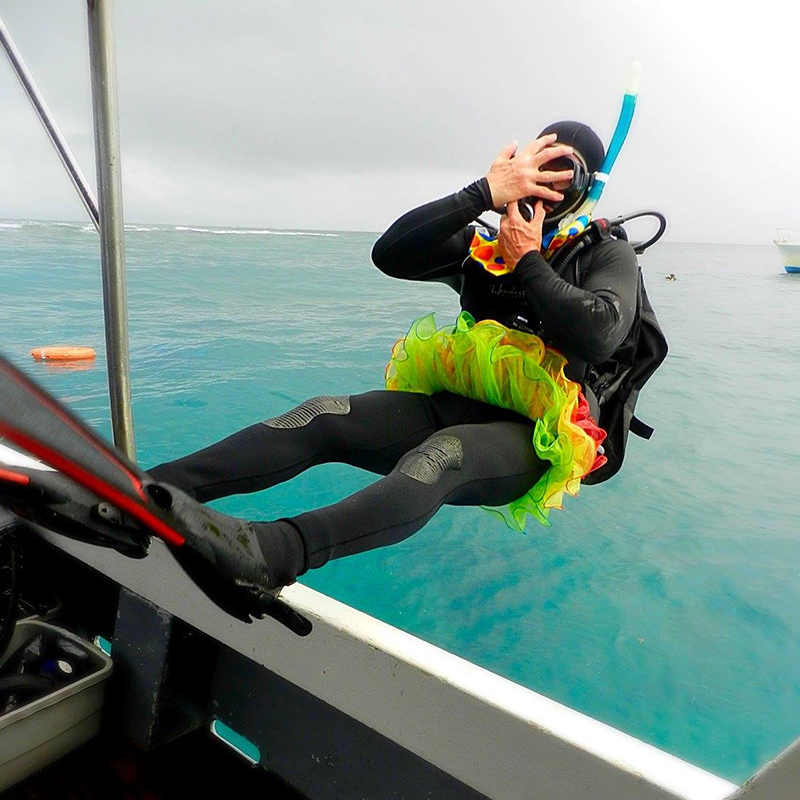Meet Barnacle Busters, One of America’s Largest and Oldest LGBTQ+ Dive Clubs

Courtesy ImageClub members gather during a recent trip to Roatan, Honduras.
It all started over coffee. Rafael Montijo, Bill Geiger, and Jim Gant gathered in the fall of 1988 to discuss launching a Southern California gay and lesbian dive club. They announced their first meeting in Frontiers, a local publication for the gay community, and reserved a room at Long Beach’s Gay and Lesbian Center, which was working to provide gay-friendly social settings outside of bars. They showed up to their November meeting to find they’d created an instant hit: Over 100 people showed up, and Barnacle Busters was born.
Getting in the water wasn’t as easy. Local dive boats refused their reservations and other divers harassed members during group trips.
“A group of divers from Texas were also at the resort,” R. A. Buck, Barnacle Busters’ dive coordinator, says of an early group trip to the Caribbean. “They continuously sent verbal abuse to us in front of other guests. We ignored them.”
Then, one night, six group members lounging on a resort dock saw an out-of-breath swimmer. Several night divers were trapped by an outgoing tide, they said. Unable to make it back to shore, the divers were holding onto a buoy outside the reef.
Buck sent two snorkel-clad Barnacle Busters to calm the stranded divers while he found a boat and driver. Offshore, they found the Texans holding fast to the line and heavy camera equipment, all of which they safely hauled aboard.

Courtesy ImageClub members march in a parade.
“Did we receive a thank you? No. Did they even acknowledge our assistance? No. Did they continue snide comments in the bar? Yes,” says Buck. “The hotel staff, however, completely accepted us as capable divers and good guys. They thanked us for helping the group every day. We have returned to that resort many times over the years; it has become our home in the Caribbean.”
With slight variations, this scene of resistance and acceptance played out again and again on Barnacle Busters trips over the years. In the early 90s, for example, a Roatan resort’s head divemaster was suddenly too sick to dive when he heard a gay group was there to dive. He magically recovered well enough each evening to go to the bar.
“With the alcohol flowing, he gradually began interacting with our members and by the end of the week he was immersed in our social life, even dancing with us at a local club,” Buck recalls. “It might not seem much to everyone, but to us this was a win.”
Eventually, the club won over the skeptics and the club—believed to be the oldest and largest LGBTQ+ dive club in the nation—is now a well-established part of the SoCal dive scene. With more than 150 members, the club participates in underwater cleanups, provides school educational programs, and plans dives from the nearby Channel Islands to biannual jaunts to the Caribbean and Indo-Pacific.

Courtesy ImageTwo divers kiss at the end of what the club believes to be the world's first gay underwater wedding.
“Wherever we go, the rainbow flag flies proudly,” says Buck.
“No diver has ever been excluded from Barnacle Busters, including members of the transgender community,” he adds. “Recently, with the increased awareness of gender fluidity, our outreach has been specifically targeting this community. We are welcoming to all and several [straight] allies also dive with us… just because they like us.”
__
Connect with the Barnacle Busters on Facebook or BarnacleBusters.org, [email protected] or [email protected].
__











